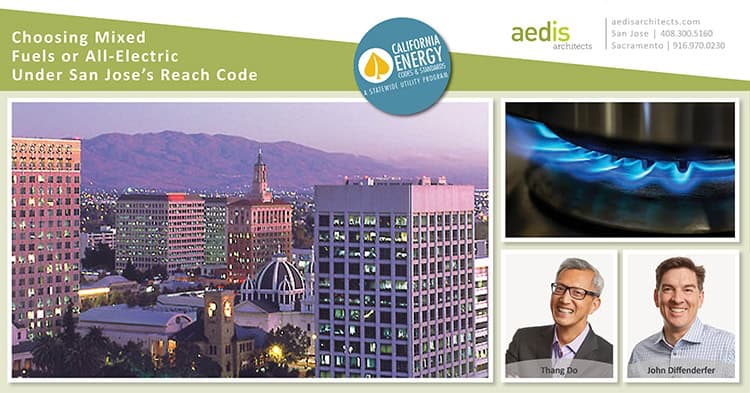Choosing Mixed Fuels or All-Electric Under San Jose’s Reach Code

San Jose’s newly adopted Reach Code presents a challenge for high-rise multi-family residential developers: build all-electric or stay with “mixed-fuel” (gas and electric). Intending to reduce carbon emissions across all new and renovation projects, the Reach Code all but bans gas in new residential buildings. However, for now, San Jose’s Reach Code continues to allow gas in high-rise multi-family residential buildings, subject to some penalties. The most significant of which is a higher baseline energy performance standard (6% margin above typical California Energy Code). With the bar set higher, potentially increasing costs for the building envelope, HVAC, and lighting systems, developers must consider the following in deciding whether to adopt an all-electric design:
- Understand What You Need Gas For, anyway: Most of the equipment you need gas for, including clothes drying and water heating) can now be electric, without sacrificing either efficiency or cost. We used to believe that gas equipment was “better” than electric, but product improvements have all but eliminated that myth. The exception -and still subject to debate–is the use of gas-fired stoves in commercial kitchens. This choice has operational implications. It might even affect your menu! Meanwhile, there is evidence that a kitchen without gas is cheaper and safer to operate, and healthier for building occupants.
- Electrical Power Infrastructure First Costs Are the Same: The Reach Code requires you to install an electrical service sufficient to supply an all-electric building now or later, regardless of your current fuel choices. Using gas does not reduce the size or the cost of the electrical infrastructure.
- Total Utility Infrastructure First Costs Are Higher for Mixed Fuels: Having gas in a building requires dual infrastructure, hence higher costs.
- More Floor Area Required for Infrastructure and Equipment: Regardless of fuel choices, you will need to commit more space for larger transformers and other equipment. Electric water heaters are larger than gas, and water storage tanks are required to accompany electric heat pump water heaters. This equipment can be located on the roof.
- Grid Electricity Costs Are High; PV’s Can Offset That: Rate-based utility costs for all-electric can be substantially higher unless coupled with a robust solar PV system. Do not forget that you will always have outlets, and lights so there is no meaningful escape from your electricity bill without solar.
Recognize that to combat climate change, San Jose, like jurisdictions everywhere, is heading in the direction of eliminating gas service. After August 1, 2021, all new developments will have to be all-electric, without the gas option. A commercial kitchen is the only remaining exception.
Choosing gas now only delays the inevitable switch to all-electric in the future.
You can check out these great resources to help you evaluate options thoughtfully.
San Jose Reach Code Summary: https://www.sanjoseca.gov/your-government/departments-offices/environmental-services/climate-smart-san-jos/2019-reach-code-initiative
Statewide Reach Code Program: https://localenergycodes.com/
